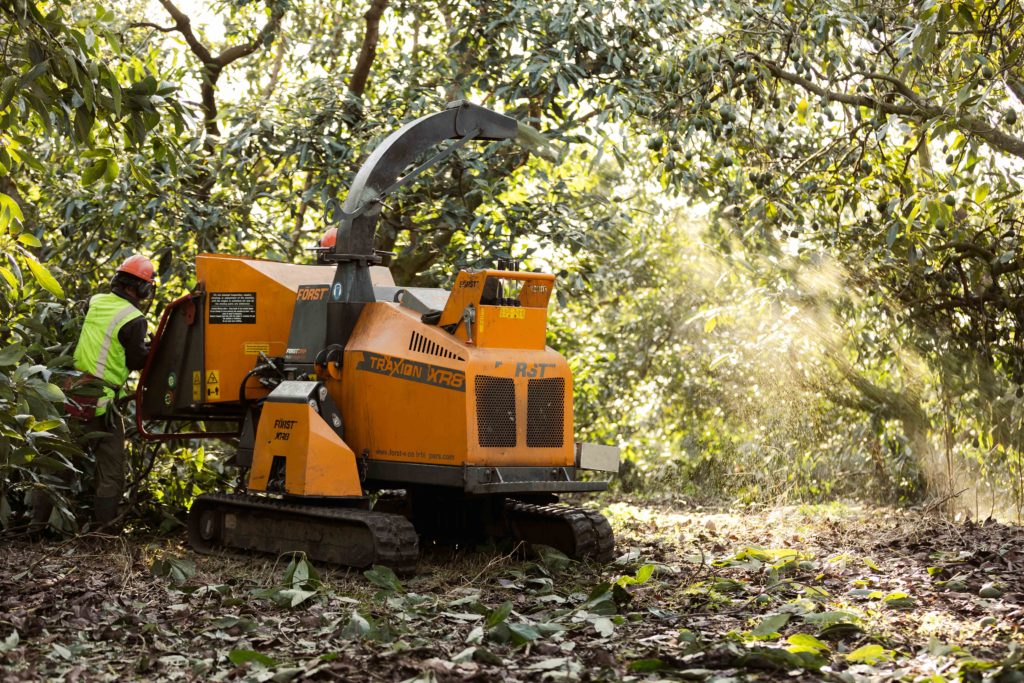Pruning
Training young trees, rehabilitation of older trees, and general canopy management.
Read more below:
How we do it
We train our staff in pruning methods designed to maximize production in your orchard. We advise pruning for the best bearing structure while considering tree height, accessibility and costs for future picking and spray penetration through the canopy.
Structural pruning is best done in autumn and winter to avoid sunburn. Management of regrowth can be done throughout the year.
We have a range of equipment which we can use to tackle any job from large old trees to delicate young plantings. Including a top of the line tracked chipper and telescopic hyrdaladas with hydraulic pole saws.
We advise removing and /or chipping all prunings to put back under the trees to provide nutritious mulch and improve orchard sanitation.

Pruning Styles
50% prune:
This is an aggressive prune used on trees that have canopied out and need a lot of work to rapidly reduce the height and width of the trees.
Initially, this prune will result in a lower crop in year one but going past this the yield will be greater as there is more light covering the tree, which will allow fruiting all over the tree and not just in the top.
This prune needs to be done in spring or winter as the tree will be left exposed to sun burn if pruned in the summer.
Structural prune:
Typically done in spring or winter.
This prune can be tailored to the growers’ needs or orchard planting style, but the essence of this style is to achieve the following:
- Reduce main branches to 4 to 5. This allows for a better fruiting structure and less competition in the tree.
- Target height and width of trees. The height should be 70% of your row width.
- Allow greater light penetration through the tree for better fruiting
- Allow better access for harvesting
- Increase fruit quality/packouts through less wind rub.
Regrowth prune:
This is a light prune in autumn to thin out all the new growth/water shoots that have grown throughout the spring/summer as a result of your winter or spring pruning.
- There may multiple new growth points on a limb. This needs to be thinned do to 1,2 or 3 new shoots.
- Tipping these new shoots is also important.






